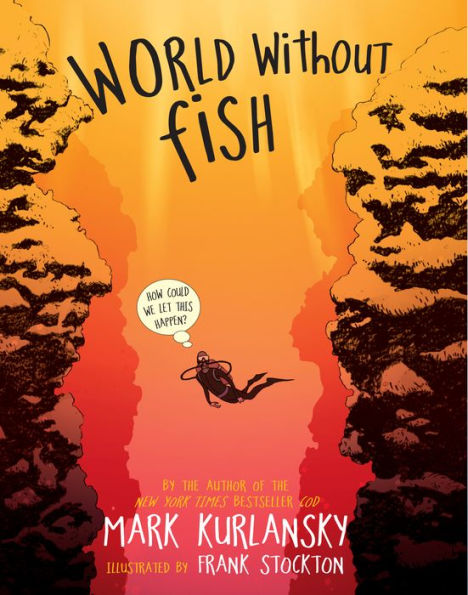Read an Excerpt
Introduction Being A Brief Outline Of The Problem A large stock of individuals of the same species, relative to the number of its enemies, is absolutely necessary for its preservation. —Charles Darwin, On the Origin of Species Most stories about the destruction of the planet involve a villain with an evil plot. But this is the story of how the earth could be destroyed by well-meaning people who fail to solve a problem simply because their calculations are wrong. Most of the fish we commonly eat, most of the fish we know, could be gone in the next fifty years. This includes salmon, tuna, cod, swordfish, and anchovies. If this happens, many other fish that depend on these fish will also be in trouble. So will seabirds that eat fish, such as seagulls and cormorants. So will mammals that eat fish, such as whales, porpoises, and seals. And insects that depend on seabirds, such as beetles and lizards. And mammals that depend on beetles and lizards. Slowly—or maybe not so slowly—in less time than the several billion years it took to create it—life on planet Earth could completely unravel. People who are in school today are lucky to have been born at a special moment in history. The Industrial Revolution, beginning in the mid-eighteenth century and continuing for the next 120 years shifted production from handcrafts to machine-made factory goods and in so doing completely changed the relationship of people to nature, the relationship of people to each other, politics, art, and architecture—the look and thought of the world. In the next fifty years, much of your working life, there will be as much change in less than half the time. The future of the world, perhaps even the survival of the planet, will depend on how well these changes are handled. And so you have more opportunities and more responsibilities than any other generation in history. One of the great thinkers of the Industrial Revolution was an Englishman named Charles Darwin. In 1859, he had published one of the most important books ever written: On the Origin of Species by Means of Natural Selection, or the Preservation of Favoured Races in the Struggle for Life, more commonly known by its shortened title: On the Origin of Species. In his book, Darwin explained the order of nature as a system in which all the many various plant and animal species struggle for survival. He did not see nature as particularly nice or kind, but as a cruel system in which species attempted to kill and dominate other species in order to secure the survival of their own kind. He wrote, “We do not see, or we forget, that the birds which are idly singing round us, mostly live on insects or seeds, and are thus constantly destroying life.” Plants and animals are organized into groups with seven major levels or categories: kingdom, phylum, class, order, family, genus (plural: genera), species. A codfish and a human belong to the same kingdom, which is animals. They also belong to the same phylum, which is vertebrates (animals with spines). But after that, they break off into completely different classes— cod are fish and humans are mammals. More specifically, humans are vertebrates of the class known as mammals in the order known as primates, which we share with monkeys and lemurs. We belong to the family Hominidae, which we share with apes and chimpanzees. Within that family, we are of the genus Homo, which are Hominidae that walk standing up on two feet. (Several other Homo genera have all died off and we are the only surviving species of this family: Homo sapiens.) Cod, on the other hand, are fish—specifically fish with jaws—that belong to a family called Gadidae. This fish family is fairly evolved, has elaborate fins, and lives in the bottom part of the ocean. They hunt voraciously the species living directly over and beneath them, and have white flesh greatly favored by Homo sapiens. Darwin wrote of how all species struggle for the survival of their own group. So it is not surprising that we humans have the greatest affection for organisms that are biologically close to us. Killing our own species is the worst thing we can do. Killing close relatives to our species, like monkeys, though it occurs, is revolting to most of us. We tend to care more about our own class—mammals, such as whales and seals and polar bears—than we do about fish. Is that because they are in a different class? Is that why people tend to have less sympathy for animals that are not in our phylum, like insects? Ultimately, a vegetarian is a human who rejects killing living things from his own kingdom—animals—but accepts killing from the other kingdom—plants.












